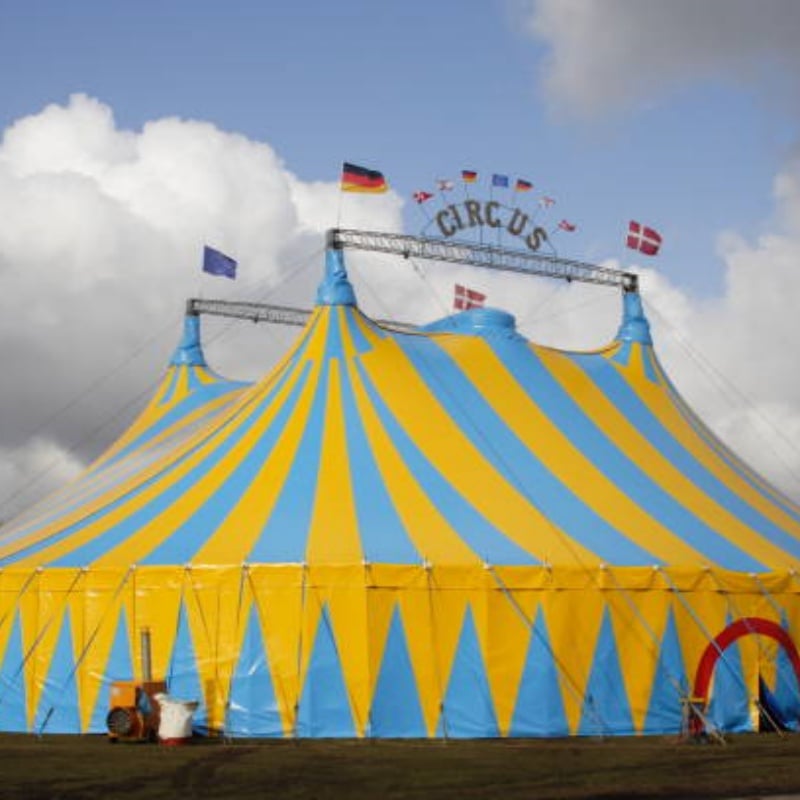Introduction
When one thinks of a circus, the first image that comes to mind is that large, colorful tent. It is the center of attraction, where all the performers showcase their talents, and where excitement and laughter fill the air. But what exactly is the main tent in a circus? This article aims to answer that question in ten different perspectives.
1. The Big Top
The main tent in a circus is commonly called the "Big Top." It is a large, round or oval-shaped tent with a tall center pole supporting a tent cloth or canvas, and other poles around the perimeter, holding up the canvas walls. The coverings are usually striped, bright-colored, and may have elaborate designs such as stars, moons, or other decorations. The Big Top represents the physical and symbolic center of the circus, where most of the action takes place.
2. History
Circus tents date back to the 18th century when circus performances were held in open fields. The first tented circus in America was called the "Circus of Pepin and Breschard" in 1835. However, after a fire destroyed it, a newer, more elaborate canvas tent was created by P.T. Barnum, the showman, in 1873. The modern version of the Big Top was developed in the late 19th century. Circus companies began to use large, multi-story tents with internal trapezes, lighting, and seating areas.
3. Size and Capacity
The size of the Big Top may vary depending on the size of the circus company or the location where it performs. Some tents can measure up to 60 meters (200 feet) in diameter and can accommodate thousands of spectators. The capacity of the tent can range from a few hundred to tens of thousands. The largest circus tent ever created was by Ringling Bros. and Barnum & Bailey Circus in 1956. The tent was 156 meters (510 feet) in length, 61 meters (200 feet) wide and had a capacity of 12,000 people.
4. Purpose
The main tent in a circus serves several purposes. Apart from the obvious fact that it houses the performances, it is also a symbol of the circus. The tent creates a sense of atmosphere and excitement, being a temporary home to people who travel and perform. The circus tent is also a marketing tool, as the colorful and striking designs can create interest and draw attention to the show.
5. Design and Construction
The design and construction of the Big Top require precision and expertise. The tent must be able to withstand outdoor elements such as rain, wind, and sun, while maintaining safety and comfort for the performers and the audience. The construction of the tent includes the use of durable materials such as canvas, polyester, and vinyl, and meticulous attention to detail to ensure stability and safety. Many circus companies have in-house teams that handle the manufacture and maintenance of the Big Top.
6. Travel
The circus is a traveling show, and so is the main tent. The Big Top is designed for easy set-up and take-down, allowing the circus to move from one location to another efficiently. Circus companies have specially designed trucks to transport the tent, and experienced crew members who set it up. A typical setup can take around 8-10 hours, and a full tear-down and pack-up another 4-6 hours.
7. Features
The Big Top may have several features depending on the type of performance and the circus company. It can have aerial rigging for aerial acts, trap doors for animal entrances and exits, and stage entrances for performers. Lighting and sound systems are also added to enhance the show. In recent years, some circuses have used projection mapping technology to create visual effects and graphics on the tent surface.
8. Safety
The safety of the performers and audience is of utmost importance in a circus. The Big Top undergoes regular inspections to ensure that it is structurally sound and that all components meet safety standards. Safety features such as fire extinguishers, smoke detectors, and emergency exits are installed throughout the tent.
9. Alternative Performances
The main tent in a circus is not limited to traditional circus performances such as acrobatics, animal shows, and clowns. Other types of shows and performances can take place inside the Big Top, such as a music festival, theater, or film screening. The unique environment of the tent provides a memorable experience for the audience.
10. Legacy
The Big Top has become an iconic symbol of the circus. It has been featured in films, literature, and popular culture. Despite the decreasing popularity of the traditional circus, the legacy of the circus tent lives on. Some circus companies have even retired their Big Tops, preserving them as historical artifacts.

